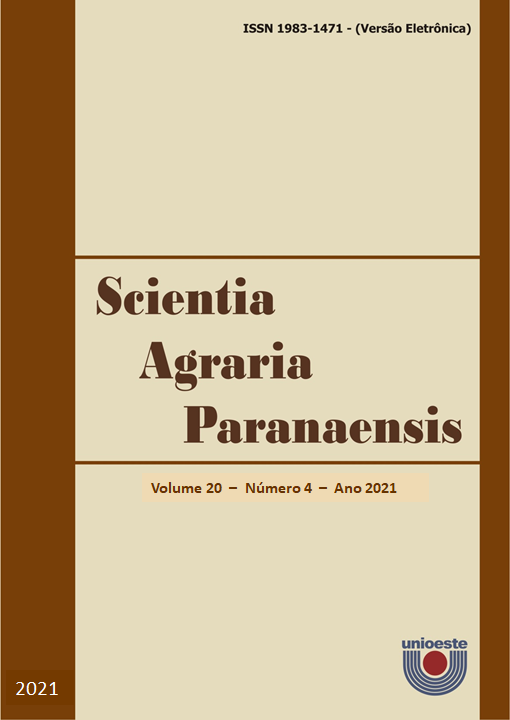Strategic positioning of soybean cultivars in the state of Rio Grande do Sul
DOI:
https://doi.org/10.18188/sap.v20i4.29136Resumo
This work aims to highlight the best soybean genotypes for specific environments in the Northwest Region of the State of Rio Grande do Sul. The experiment was carried out in the 2018/19 crop season in fifteen cultivation environments in the Northwest region of the state of Rio Grande do Sul, using 52 soybean genotypes in 15 growing environments. The experimental design used was lattice with treatments (growing environments) arranged in three replications. In each useful area of the experimental unit, the grain productivity of the genotypes was evaluated. Then, the Restricted Maximum Likelihood (REML) method was applied to estimate the variance components and genetic parameters. The following variance components were estimated: Genetic variation (Vg) and phenotypic variation (Vp). The genetic parameters estimated were: broad sense heritability (H²), coefficient of genotypic variation (CVg), coefficient of residual variation (CVe), ratio between genetic and residual coefficient (CVr) and selective accuracy (Ac). The phenotypic expression of grain yield is determined by 17% due to genetic effects and 83% by the environment. The NS 6909 RR IPRO, NS 5445 IPRO, DM 5958 IPRO and DM 6563 IPRO genotypes showed greater genetic gains for grain yield. The environments Doutor Maurício Cardoso (RS), Nova Ramada (RS) and Independência (RS) are characterized as favorable environments.
Downloads
Publicado
Como Citar
Edição
Seção
Licença
Aviso de Direito Autoral Creative Commons
Política para Periódicos de Acesso Livre
Autores que publicam nesta revista concordam com os seguintes termos:
1. Autores mantém os direitos autorais e concedem à revista o direito de primeira publicação, com o trabalho simultaneamente licenciado sob a Licença Creative Commons Attribution que permite o compartilhamento do trabalho com reconhecimento da autoria e publicação inicial nesta revista.2. Autores têm autorização para assumir contratos adicionais separadamente, para distribuição não-exclusiva da versão do trabalho publicada nesta revista (ex.: publicar em repositório institucional ou como capítulo de livro), com reconhecimento de autoria e publicação inicial nesta revista.
3. Autores têm permissão e são estimulados a publicar e distribuir seu trabalho online (ex.: em repositórios institucionais ou na sua página pessoal) a qualquer ponto antes ou durante o processo editorial, já que isso pode gerar alterações produtivas, bem como aumentar o impacto e a citação do trabalho publicado (Veja O Efeito do Acesso Livre).
Licença Creative Commons
Esta obra está licenciada com uma Licença Creative Commons Atribuição-NãoComercial-CompartilhaIgual 4.0 Internacional, o que permite compartilhar, copiar, distribuir, exibir, reproduzir, a totalidade ou partes desde que não tenha objetivo comercial e sejam citados os autores e a fonte.


